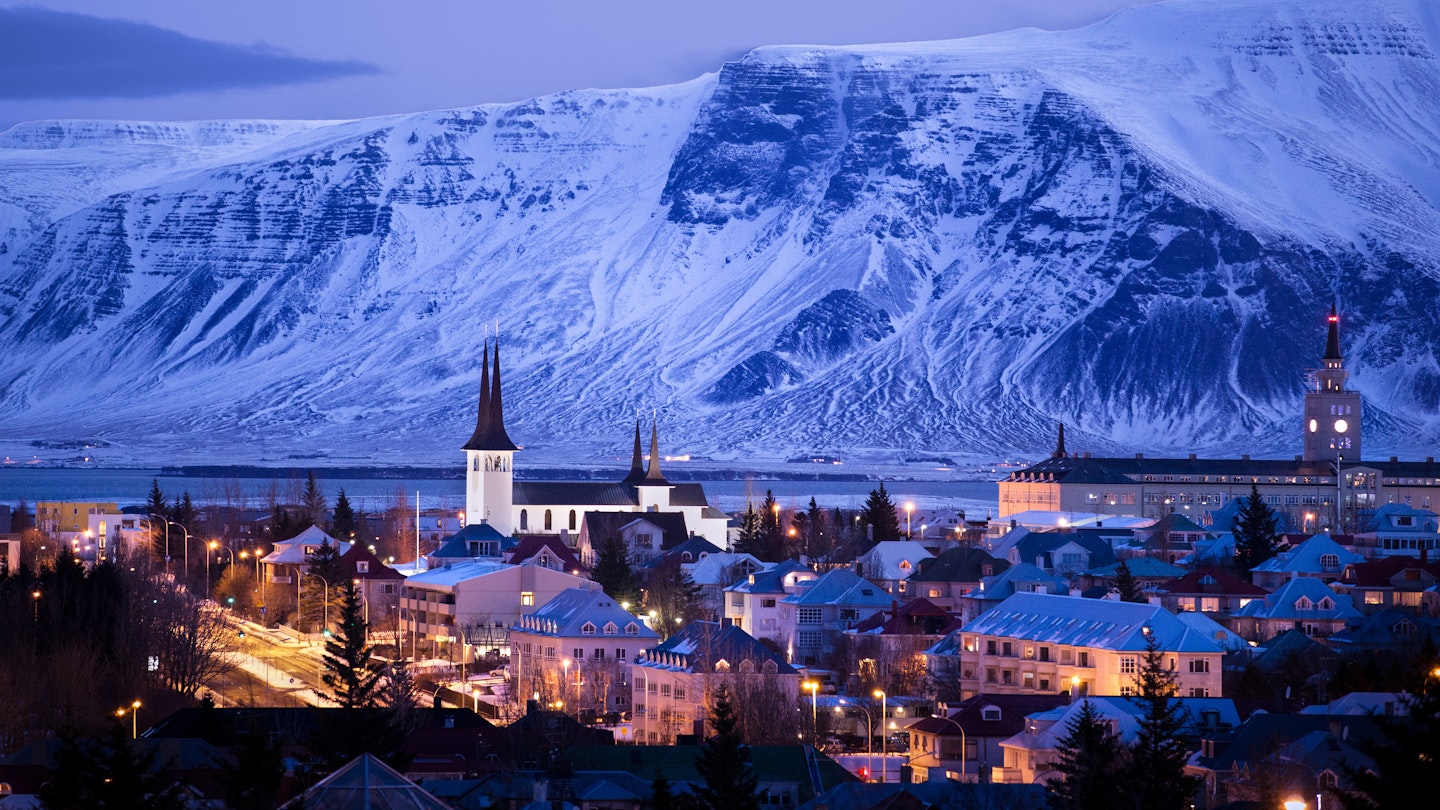Explore the Charm of Reykjavik, Iceland

You may have seen pictures of Reykjavik’s brightly colored houses tiered along the shore, vibrant cafes, and drone footage of fireworks over the iconic Hallgrímskirkja slicing the skyline. Iceland’s capital promises all of this and more.
Reykjavík is full of life year-round. Approximately 60% of the country’s population lives in the capital region, making the most of their long winters with superb arts and crafts, an excellent live-music scene, and world-class restaurants. Adding to this are humble hot dog stands and toasty hot springs, perfect for soaking and taking the chill out of your bones after a long walk.
Combine your city break with a day trip or more to explore the volcanoes, waterfalls, and glaciers that radiate out across this splendid, welcoming island.
When Should You Visit Reykjavik?
Reykjavík fills right up from June to August when visitors flock to Iceland for its warm summer season and long days. Some of the most extreme mountain roads (called F roads in Iceland) only open from mid- to late-June and close by the end of August. However, prices are at their highest during this peak season, and accommodations should be booked well in advance for good deals.
Spring and autumn are great opportunities to visit with fewer crowds, allowing you to enjoy the open spaces more intimately. While the weather can be variable, it is generally milder, and prices tend to be more favorable.
Winter brings darkness but also the chance to witness the atmospheric sunrises and sunsets. The Northern Lights are also visible at this time. Although some country hotels and restaurants reduce services during the December holidays, Reykjavík remains vibrant. Consequently, prices are often the most affordable in winter.
How Much Time Should You Spend in Reykjavik?
If time allows, spend several days soaking in the Reykjavík vibe and exploring top sights. A visit lasting two to three days allows for leisurely coffees and the famous kleinur (bow-shaped donuts), plus opportunities to shop, visit art museums, and capture selfies across iconic locations.
It is advisable to allocate at least two additional days for countryside explorations or whale-watching excursions. Activities range from ice climbing and hiking to viewing puffins, ensuring a truly memorable experience.
Getting to and Around Reykjavik
Reykjavík stands as Iceland’s primary international gateway, with Keflavík International Airport located about 49km southwest of the city. As the airport expands, it facilitates efficient travel from various locations.
The city center is walkable, featuring tidy streets and attractions clustered around Lake Tjörnin. Although public transport is comprehensive, a rental car is generally unnecessary for navigating the city unless mobility issues arise.
Top Things to Do in Reykjavik
Exploring Reykjavík on foot is part of the fun, allowing you to discover various cafes and shops easily. A visit to Hallgrímskirkja or the Reykjavík Art Museum and Photography Museum is highly recommended.
Strolling through the Old Reykjavík district provides a historical perspective. Checking out the earliest buildings and the Viking longhouse at the Settlement Exhibition enriches the experience.
A walk along the Old Harbour allows for scenic views of the Harpa concert hall and numerous dining options, ranging from high-end seafood to a casual atmosphere. This area is also bustling with various entertainment opportunities.
Outdoor Activities in Reykjavik
Iceland offers ample opportunities for outdoor activities. Enjoy hot pools and geothermal hot springs throughout the country. In Reykjavík, the vintage pool at Sundhöllin is a favorite among locals. Don’t miss the chance to walk around Seltjarnarnes and soak in its community pool.
Etiquette Tip: Shower Before Getting Into a Pool or Hot Spring
It is required across Iceland to shower using soap without your swimsuit before entering any pool or hot spring. This practice keeps the pools clean and reduces the need for chemicals.
Budgeting for Your Trip to Reykjavik
Reykjavík can be expensive, especially for lodging and dining. Booking ahead of time is key to securing better rates. Bars and restaurants may be pricey, but combining dining out with self-catering can help manage costs effectively.
Consider exploring budget-friendly options such as hostels, camping, or staying in a camper van for a unique twist on accommodations.
Prepare for Unpredictable Weather
The weather in Reykjavík can be unpredictable; a sunny day can rapidly change. Always pack layers and bring a waterproof outer layer when venturing outside.
Do You Need to Know Icelandic?
Most Icelanders speak excellent English, making communication easy. However, learning a few Icelandic phrases like “takk fyrir” (thank you) shows appreciation for local culture.
Being a Responsible Traveler in Reykjavik
Utilize online resources to plan your travels safely. Stay respectful of local residents and their needs. Moreover, if you venture beyond the city, stick to marked paths, support sustainable tourism, and check weather and road conditions before heading out.





